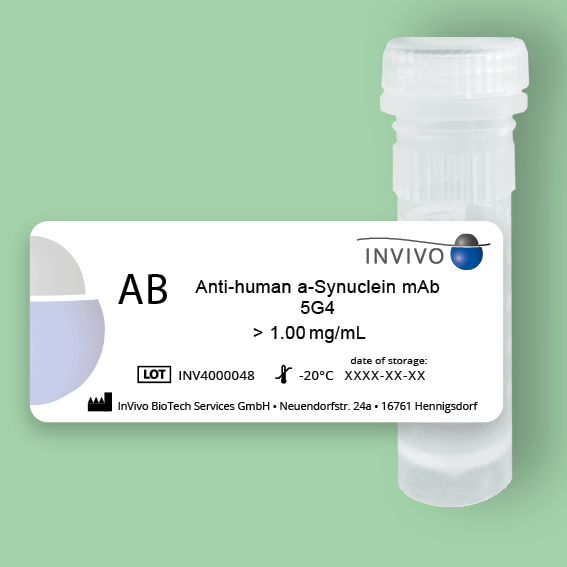| Literature |
[1] – Tofaris GK. Initiation and progression of α-synuclein pathology in Parkinson’s disease. Cell Mol Life Sci. 2022 Mar 26;79(4):210. doi: 10.1007/s00018-022-04240-2. PMID: 35347432; PMCID: PMC8960654.
[2] – Atik A, Stewart T, Zhang J. Alpha-Synuclein as a Biomarker for Parkinson’s Disease. Brain Pathol. 2016 May;26(3):410-8. doi: 10.1111/bpa.12370. PMID: 26940058; PMCID: PMC6245641.
[3] – Burré J, Sharma M, Südhof TC. Cell Biology and Pathophysiology of α-Synuclein. Cold Spring Harb Perspect Med. 2018 Mar 1;8(3):a024091. doi: 10.1101/cshperspect.a024091. PMID: 28108534; PMCID: PMC5519445.
References:
a. Calderón-Garcidueñas L, Stommel EW, Torres-Jardón R, Hernández-Luna J, Aiello-Mora M, González-Maciel A, Reynoso-Robles R, Pérez-Guillé B, Silva-Pereyra HG, Tehuacanero-Cuapa S, Rodríguez-Gómez A, Lachmann I, Galaz-Montoya C, Doty RL, Roy A, Mukherjee PS. Alzheimer and Parkinson diseases, frontotemporal lobar degeneration and amyotrophic lateral sclerosis overlapping neuropathology start in the first two decades of life in pollution exposed urbanites and brain ultrafine particulate matter and industrial nanoparticles, including Fe, Ti, Al, V, Ni, Hg, Co, Cu, Zn, Ag, Pt, Ce, La, Pr and W are key players. Metropolitan Mexico City health crisis is in progress. Front Hum Neurosci. 2024 Jan 12;17:1297467. doi: 10.3389/fnhum.2023.1297467. PMID: 38283093; PMCID: PMC10811680.
b. Raunio A, Myllykangas L, Kero M, Polvikoski T, Paetau A, Oinas M. Amygdala α-Synuclein Pathology in the Population-Based Vantaa 85+ Study. J Alzheimers Dis. 2017;58(3):669-674. doi: 10.3233/JAD-170104. PMID: 28482633; PMCID: PMC6218117.
c. Kon T, Forrest SL, Lee S, Martinez-Valbuena I, Li J, Nassir N, Uddin MJ, Lang AE, Kovacs GG. Neuronal SNCA transcription during Lewy body formation. Acta Neuropathol Commun. 2023 Nov 23;11(1):185. doi: 10.1186/s40478-023-01687-7. PMID: 37996943; PMCID: PMC10666428.
d. Enomoto M, Martinez-Valbuena I, Forrest SL, Xu X, Munhoz RP, Li J, Rogaeva E, Lang AE, Kovacs GG. Lewy-MSA hybrid fold drives distinct neuronal α-synuclein pathology. Commun Biol. 2025 Jun 16;8(1):929. doi: 10.1038/s42003-025-08355-7. PMID: 40523906; PMCID: PMC12170825.
e. Martinez-Valbuena I, Visanji NP, Kim A, Lau HHC, So RWL, Alshimemeri S, Gao A, Seidman MA, Luquin MR, Watts JC, Lang AE, Kovacs GG. Alpha-synuclein seeding shows a wide heterogeneity in multiple system atrophy. Transl Neurodegener. 2022 Feb 7;11(1):7. doi: 10.1186/s40035-022-00283-4. PMID: 35125105; PMCID: PMC8819887.
f. Unterberger U, Lachmann I, Voigtländer T, Pirker W, Berghoff AS, Flach K, Wagner U, Geneste A, Perret-Liaudet A, Kovacs GG. Detection of disease-associated α-synuclein in the cerebrospinal fluid: a feasibility study. Clin Neuropathol. 2014 Sep-Oct;33(5):329-34. doi: 10.5414/np300796. PMID: 25131945; PMCID: PMC4151342.
g. Fröhlich C, Zschiebsch K, Gröger V, Paarmann K, Steffen J, Thurm C, Schropp EM, Brüning T, Gellerich F, Radloff M, Schwabe R, Lachmann I, Krohn M, Ibrahim S, Pahnke J. Activation of Mitochondrial Complex II-Dependent Respiration Is Beneficial for α-Synucleinopathies. Mol Neurobiol. 2016 Sep;53(7):4728-44. doi: 10.1007/s12035-015-9399-4. Epub 2015 Aug 29. PMID: 26319560; PMCID: PMC4965489.
h. Bétemps D, Verchère J, Mougenot AL, Lachmann I, Morignat E, Antier E, Lakhdar L, Legastelois S, Baron T. Detection of Disease-associated α-synuclein by Enhanced ELISA in the Brain of Transgenic Mice Overexpressing Human A53T Mutated α-synuclein. J Vis Exp. 2015 May 30;(99):e52752. doi: 10.3791/52752. PMID: 26068223; PMCID: PMC4542988.
i. Kovacs GG, Breydo L, Green R, Kis V, Puska G, Lőrincz P, Perju-Dumbrava L, Giera R, Pirker W, Lutz M, Lachmann I, Budka H, Uversky VN, Molnár K, László L. Intracellular processing of disease-associated α-synuclein in the human brain suggests prion-like cell-to-cell spread. Neurobiol Dis. 2014 Sep;69:76-92. doi: 10.1016/j.nbd.2014.05.020. Epub 2014 May 27. PMID: 24878508.
j. Kovacs GG, Wagner U, Dumont B, Pikkarainen M, Osman AA, Streichenberger N, Leisser I, Verchère J, Baron T, Alafuzoff I, Budka H, Perret-Liaudet A, Lachmann I. An antibody with high reactivity for disease-associated α-synuclein reveals extensive brain pathology. Acta Neuropathol. 2012 Jul;124(1):37-50. doi: 10.1007/s00401-012-0964-x. Epub 2012 Feb 28. PMID: 22370907.
k. Skorvanek M, Gelpi E, Mechirova E, Ladomirjakova Z, Han V, Lesko N, Feketeova E, Repkova B, Urbancikova Z, Vargova A, Spisak P, Ribeiro Ventosa J, Kudela F, Kulcsarova K, Babinska S, Toth S, Gombosova L, Zakuciova M, Veseliny E, Trebuna F, Lutz MI, Gdovinova Z, Kovacs GG; PARCAS studygroup. α-Synuclein antibody 5G4 identifies manifest and prodromal Parkinson’s disease in colonic mucosa. Mov Disord. 2018 Aug;33(8):1366-1368. doi: 10.1002/mds.27380. PMID: 30230627.
l. Tóth Š, Kulcsárová K, Maretta M, Kunová A, Mechírová E, Gdovinová Z, Feketeová E, Ribeiro Ventosa J, Baloghová J, Bekeová M, Christová P, Mrázová S, Muránska S, Zeidan D, Škorvánek M. α-synuclein antibody 5G4 identifies idiopathic REM-sleep behavior disorder in abdominal skin biopsies. Parkinsonism Relat Disord. 2024 Mar;120:105956. doi: 10.1016/j.parkreldis.2023.105956. Epub 2023 Dec 9. PMID: 38217955.
|

Reviews
There are no reviews yet.